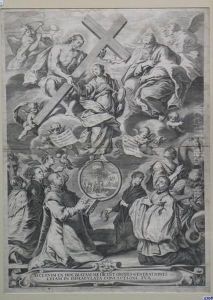Bartholome Kilian Paintings
Bartholomäus Kilian, also known as Bartholomaeus Kilian the Elder, was a renowned German engraver born in 1630 in Augsburg, a city in the Holy Roman Empire known for its artistic and cultural achievements during the Baroque period. He was part of a family of artists; his father, Lukas Kilian, was also an accomplished engraver, and his brothers, Wolfgang Kilian and Lucas Kilian the Younger, worked in the same field. This familial environment immersed Bartholomäus in the art of engraving from a young age, providing him with a strong foundation in the craft.
Kilian's career blossomed in Augsburg, where he produced a significant body of work that included portraits and reproductions of paintings by other artists. His engravings were highly regarded for their quality and detail, capturing the likeness and character of his subjects with precision and care. Kilian's portraits of notable figures of his time were particularly sought after, as they were not only works of art but also important records of historical personages.
In addition to portraits, Kilian created book illustrations, title pages, and various decorative prints. He worked on commissions for prominent patrons and contributed to the dissemination of the Baroque style in printmaking. His style was characterized by a combination of intricate detail and the grandeur typical of the Baroque era, reflecting the tastes and aesthetics of the time.
Bartholomäus Kilian passed away in 1696, leaving behind a legacy of craftsmanship and a portfolio that continues to be appreciated by art historians and collectors alike. His works are held in numerous museum collections and are studied for their technical expertise as well as their cultural significance. Kilian's contribution to the world of engraving is a testament to the vibrancy of the printmaking tradition in 17th-century Germany.
